Physical Address
304 North Cardinal St.
Dorchester Center, MA 02124
Physical Address
304 North Cardinal St.
Dorchester Center, MA 02124
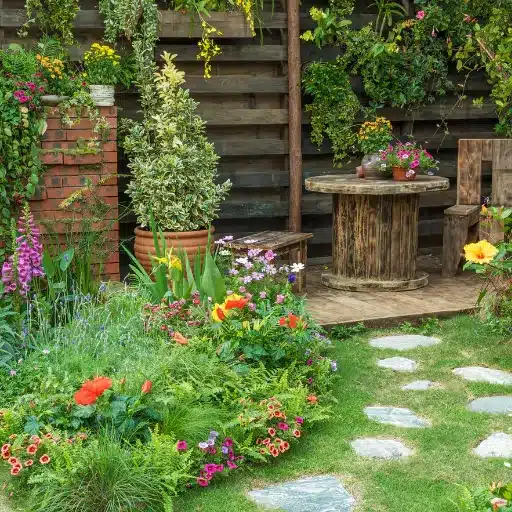
Small space gardening does not mean compromising on variety or yield, especially when growing vegetables in containers. With planning and some creativity, even the smallest patio, balcony, or windowsill can be converted into a thriving vegetable garden. In this post, we shall introduce you to the fundamental principles of spacing for container vegetables, ensuring that every plant has enough room to grow into a healthy and productive organism. Whether you have been gardening for years but want to scale down or you are a beginner who just wants to give container gardening a try, useful tips and insights will be provided on maximizing space and yield. Let’s get our hands dirty and uncover the secrets to growing a lush garden anywhere!
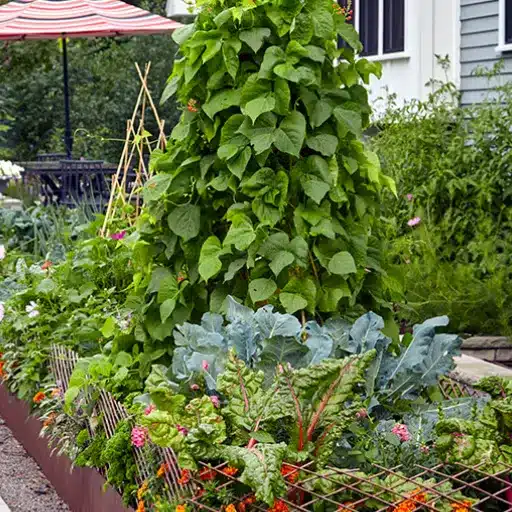
Proper spacing in small space or container gardening is very important when it comes to providing the plants with sufficient light, air, and nutrients. Crowded plants grow poorly, become susceptible to diseases, and produce less. As a general rule, always check the spacing suggestions given on seed packets or plant labels, which usually give the minimum distance plants have to be put apart. While container gardening, keep in mind the mature size of a plant and accordingly choose containers-the smaller herbs like basil can hold well in containers just with a diameter of 6 inches, whereas large crops like tomatoes require containers with at least a 5-gallon capacity. Good plant spacing improves healthier plant growth, creating more space for effortless maintenance and harvesting.
There are some reasons to consider in spacing for container gardening: overcrowding will produce more competition for light, water, and nutrients, whereas spaced plants can grow a little stronger. With a great distance, air circulation will also be increased. Hence, the possibility of fungus infections is decreased while the overall health of plants is promoted. Other care procedures such as watering, pruning, and harvesting become easier with proper distances to work between plants. By following those instructions given for spacing on seed packets or labels, the gardener then has established the container plant for success.
A common mistake regarding plant spacing in vegetable gardens is that some gardeners have overcrowded plants under the mistaken premise of getting the maximum yield. Competition for the vital life resources of light, water, nutrients, etc., ensues, ultimately impeding growth and unproductively. Other times, the mature size of the plants is underestimated, thereby creating crowding conditions with poor air circulation and predisposing the possibility of fungal infections. In many cases, gardeners overlook the seed packet or plant label regarding spacing instructions, thereby downplaying the need for such. The life and productivity of any vegetable garden lie in proper planning and abiding by spacing requirements.
Different plants need different types of spacing in order to grow well. Some leafy greens, such as lettuces and spinach, can be spaced 6 to 12 inches apart, whereas larger plants like tomatoes and peppers usually need 18 to 24 inches to allow adequate airflow and growth. Root vegetables such as carrots and radishes generally require 2 to 4 inches of spacing, while sprawling plants like pumpkins and watermelons are kept several feet away, courtesy of their long vines. Obeying the spacing directions on the seed packets or plant labels gives each vegetable sufficient resources, lessens competition, and limits the chances of diseases, thereby promoting a healthy and productive garden.
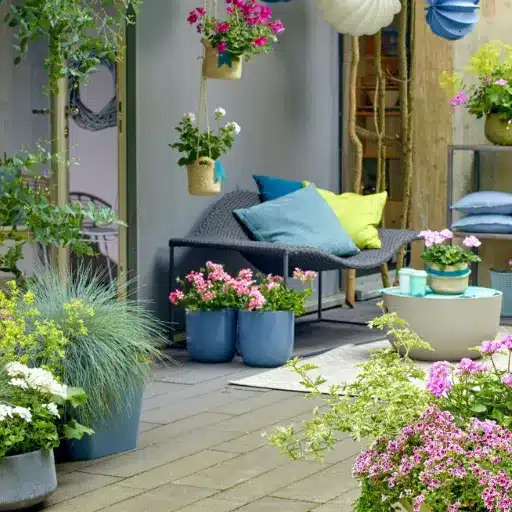
Tips to Start a Vegetable Garden for Small Spaces
Go Container Gardening: Kindly use pots, planters, and even recycled containers to grow vegetable crops. Every container should have drainage holes and should be big enough to accommodate the plant’s growth.
Grow Upward: Use trellises, hanging baskets, or wall planters. Such space utilization works best for making trellises for vining plants such as tomato, cucumber, or bean.
Choose Compact and Dwarf Varieties: There are smaller varieties of many vegetables that grow well in limited spaces, such as cherry tomatoes, salad greens, and peppers, just to name a few.
Consider Sunlight: Most vegetables require at least 6 hours of direct sunlight every day. Hence, place your garden in the sunniest spot you can find.
Practice Succession Planting: Stagger planting and replace one crop with another after harvesting to maximize yields during the growing season.
Use Good Quality Soil: Good quality potting or garden soil rich in organic matter is a necessity for healthy plant growth.
Small productive vegetable gardens may very well be necessary in these small areas, with the methods presented here.
Selecting the containers is one of the most important decisions in gardening if space is limited for planting. According to Google’s latest search data, the ideal containers would be those that allow for proper root development, give proper drainage, and suit the specifications of the particular plants you want to grow. Plastic containers may either prevent moisture loss, or in contrast to terracotta types, they increase water evaporation in the air.
Container size matters a little because big vegetables like tomatoes or peppers need deep and spacious pots that hold 5 gallons at the very least, while smaller herbs like basil or parsley do well in smaller containers. Self-watering kits are gaining more popularity because of their convenience and water efficiency and, therefore, are an excellent choice for busy gardening enthusiasts. With careful consideration of your plant needs and gardening goals, you can wisely make all the decisions needed for a thriving garden.
In arranging containers for maximum yield, consider the sunlight requirements for each plant and place each container in an area where the plant can conduct its life processes. Therefore, group those requiring direct sunlight in sunlit areas and those tolerant to shade in shadowy places. Furnish ideal spacing in between containers to provide air circulation, thus preventing disease problems and ensuring healthy growth. Furthermore, the creative use of vertical space through shelves or hanging planters can create more growing opportunities for small spaces. The containers should be rotated now and then to give equal sunlight exposure, thereby making it easier to group plants that require equal watering. Good planning and a good organization can do a lot to increase productivity in container gardening.
Vertical gardening is an innovative solution that enables one to sport a thriving garden when real estate is at a premium. Gardeners make use of walls, trellises, or various vertical supports to cultivate a vast assortment of plants on balconies or maybe urban courtyards. This technique helps in maximizing space, while air circulation around these plants prevents many diseases. Alternatively, vertical gardens can be of great aesthetic value in nature, serving as natural insulators for walls, which helps to regulate temperature indoors.
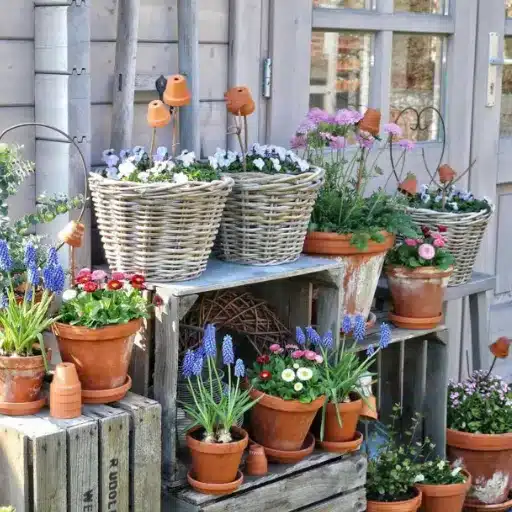
Selecting the Right Containers
Containers with drainage holes should be chosen to avoid waterlogging of plants. The size of the container must fit the growth of the plant so that the root has enough space to expand.
Choosing the Soil
Good-quality potting soil is preferred instead of garden soil, as it has better aeration properties and nutrient availability. A mixture meant for container gardening would be best.
Watering Properly
Check soil moisture; water the plants when the top inch of the soil dries. Keep away from over-watering, which can contribute to root rot.
Providing Adequate Sunlight
Set up containers in places where respective sunlight requirements of each plant, whether full sun, partial shade, or full shade, are met.
Fertilizing Effectively
On the basis of feeding requirements, one should use a balanced slow-release fertilizer or liquid fertilizer. One should go easy on fertilizing to prevent harm to their plants.
Watching Out for Pests
Regular inspections should be applied to plants for any pest or disease damage. Go ahead with treatment if ever thought necessary to maintain plant health.
If one is starting a garden, he or she must get certain tools and supplies to assist in gardening affairs. A sturdy trowel, a fine pair of pruning shears, and a good garden fork are basic paraphernalia needed for planting and maintenance. Proper watering would require a good watering can or simply a garden hose with a spray attachment. A decent pair of garden gloves will shield ears from thorns and rub against rest dirt. In soil preparation, care, and amendment, a spade, rake, and some form of amendment or compost will come in handy. It is fairly helpful to get a wheelbarrow or garden cart to cart heavy loads. Marking plants with markers and keeping a journal would undoubtedly assist with plant information and care routines for starters-equipments and supplies for the creation of a good garden.
By watering and maintenance, you can keep your garden vibrant and flourishing. Avoid overwatering by observing soil moisture-thank its top inch of soil drying out on the surface is a good indication. Instead, watering early in the morning allows plants to absorb moisture while the heat of the day is still yet to set in and mitigates the likelihood of fungi coming into existence. The use of soaker hoses or drip irrigation systems can be employed to water have a consistent delivery of water at the base of the plants and prevent water wastage. Pruning is done regularly so that it encourages growth while the purpose of removing any dead or diseased parts becomes necessary. Mulching retains soil moisture and helps keep weed competition to a minimum, while fertilization should be carried out depending on your plants’ requirements. If attention is given to these, then your garden will grow happily with much less irritation.
There are tons of resources and books to steer your small space gardening project. The Urban Gardener by Matt James and The Edible Balcony by Alex Mitchell provide much practical advice on making the best use of minimum gardening space. Container gardening enthusiasts are blessed with Container Vegetables Made Easy by James Paris for step-by-step suggestions. The Internet with its gardening blogs, tutorials on YouTube, and gardening forums can supply great information on vertical gardening, efficient layouts, and plant selections suited for small jumps. These enable your gardening dreams to thrive even when the spaces are minuscule.
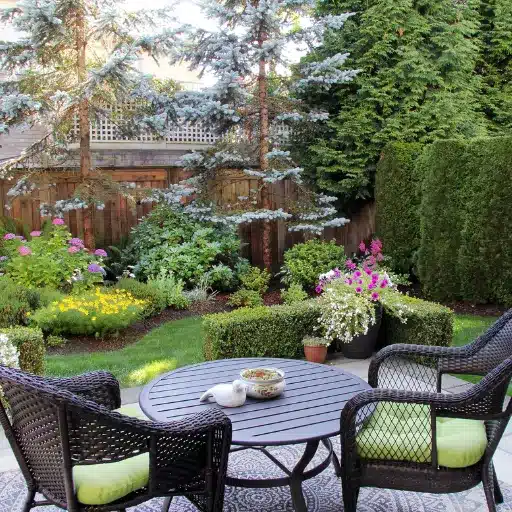
A lot of space should be saved in small outdoor vegetable-growing areas. Vertical gardening takes the lead, using trellises, wall-mounted planters, and hanging baskets so you may train vines like cucumbers, tomatoes, or beans vertically instead of horizontally. Container gardening is another good method, allowing you to grow various vegetables, such as lettuce, herbs, and peppers, in containers or troughs that are easily movable to suit whichever spaces are available. Plant varieties should be short and high-yielding, such as dwarf carrots, cherry tomatoes, and bush beans to ensure you get the most out of your extremely limited growing area. Employ companion planting as well, where different plants are grown side by side to increase productivity and cut down on pests, thereby enhancing your efficacy in small-space gardening. Do not forget to look into sunlight exposure, soil quality, and irrigation requirements, so your plants grow well.
In small spaces, seasonal considerations are made so that we can optimize production. In the spring, focus on cool-season crops that do best when the weather is mild: lettuce, spinach, and radishes. Summer is when the heat-tolerant varieties such as peppers, cucumbers, and eggplants should be grown; these plants need to be assured of steady growth, which means checking soil moisture at regular intervals and shading the plants if needed. During the fall, go back to the cool-season crops, although the hardier varieties like kale or Brussels sprouts should continue into early winter. Crop rotation and succession planting keep your soil fertile, while pests do not build up at the same time; thus, they must be done year-round. Make sure to pick vegetables according to your specific hardiness zone and regional climate conditions for better results.
Companion planting in limited spaces demands a careful choice of plants to foster mutual growth while limiting competition for resources. It is best to pair vegetables, herbs, or flowers whose needs complement each other; peas and beans, for instance, fix nitrogen for crops like tomatoes that require more from the soil. Promote climbing plants to grow on vertical structures like trellises to save horizontal spacing and interplant fast-growing crops, such as radishes, with slow growers, such as carrots, to make the best use of timing and soil. Furthermore, choose plants for pest deterrence: marigolds are said to repel detrimental insects from nearby crops, lessening the need for chemical sprays. If well thought out, companion planting could help boost productivity in even very limited growing spaces.
Container-grown veggies must be harvested at an appropriate maturity level for high yield and for the health of plants. Monitor your crops regularly for the signs of harvest readiness that may include size, color, or texture, indicating full ripeness. Cut-and-come-again is a term given to harvesting leaves of leafy greens, such as spinach or lettuce by trimming the outer leaves and allowing the plant to produce more. Root vegetables should generally be loosened from the surrounding soil with care in opening gaps so as to avoid damage to the product. Fruiting plants, such as tomatoes or peppers, should be harvested by gently twisting or cutting the fruit from the stem with care to avoid stressing the plant. Harvesting encourages plants to continue producing, while at the same time, it prevents the fruits from becoming overripe, which tends to attract pests or spoils.
Some of the good aspects of small space gardening account for its appeal to the urban gardener and others who have limited outdoor space. Here, underlining that it will grow food of some sort-small space gardening maximizes all space available. One simply has to accept containers or raised beds for gardening to build an ideal garden just suited for thriving within these torturous city environments. Moreover, smaller gardens can be an escape in which moral therapy takes place, thus promoting mental well-being and alleviating stress. This kind of gardening nurtures the green side of this world by way of some sustainability and less dependence on buying at produce in the store. Such a conversion grants the objector the ability to turn back and view a healthy, productive nature.
Since garden design for small spaces requires unbounded creativity and careful planning, one has to ensure that plants can be grown efficiently according to one’s wishes. The first thing to do is to ascertain how much sunlight the place receives and where to locate your garden plot. Vertical gardening increases available space and provides room for climbers such as bush beans or zucchini. You may also think of building raised vegetable beds or filling containers with a mix of potting mix, coco coir, or soil and water, depending on the growing requirements of the plants. Edible flowers can add beauty to your garden while providing additional sources of food. Lastly, go for companion plants that would benefit each other in their growth and health.
Consider the following tips and tricks when container gardening for healthy growth. The first factor to consider is the size of the pot relative to your plant. Bigger pots are better for plants with deeper roots, such as tomatoes. Ensure pots drain well or else the water stands and root rot develops. A good potting mix created using worm castings and coir could be the right combination of ingredients to provide for the plants. Be mindful of the hours of sunlight your location will receive; a good number of herbs and vegetables prefer at least 6 hours of direct sunlight. Keep your garden plants healthy by always checking for pests and diseases.
Growing vegetables in a small town is more and more feasible with the emergence of urban gardening. Start with rooftops or balconies that can be converted into colorful gardens in pots. Fast-growing crops like salad greens or herbs that can grow fast in very limited spaces should be chosen. Hydroponics and aquaponics systems are great methods to grow food without traditional soil. Raised beds in small yards or community gardens will also work well in the limited space. Local-gardening-network interaction will enrich your journey with support and resources and will create a bond of unity.
The creation of a raised vegetable bed requires certain considerations to ensure the successful execution of a small scale gardening project. First, an ample sunlight spot must be chosen, one that receives a minimum of 6 hours of sunlight each day. Second, the height and dimensions of the raised bed should be manageable for you so that planting and maintenance are possible within easy reach. Third, fill the raised bed with soil and water. Consider adding organic matter such as compost or worm castings, which would enrich the mixture, thus creating a very rich environment for your growing plants. Plant spacing of course must be taken into consideration so that the plants do not crowd each other and have proper air circulation. Considerations about which types of vegetables to grow also come into play, since some may need a little more room or support than others.